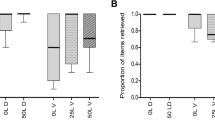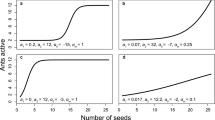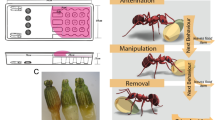Abstract.
Seed dispersal by ants (i.e. myrmecochory) is usually considered as a mutualism: ants feed on nutritive bodies, called elaiosomes, before rejecting and dispersing seeds in their nest surroundings. While mechanisms of plant dispersal in the field are well documented, the behaviour of the ant partner was rarely investigated in details. Here, we compared in laboratory conditions the foraging behaviour of two ant species, the omnivorous Lasius niger and the insectivorous Myrmica rubra to which seeds of two European myrmecochorous plants (Chelidonium majus and Viola odorata) were given. Ant colonies were simultaneously presented three types of items: entire seeds with elaiosome (SE), seeds without elaiosome (S) and detached elaiosomes (E). The presence of elaiosomes on seeds did not attract workers from a distance since ants first contact equally each type of items. Although ants are mass-recruiting species, we never observed any recruitment nor trail-laying behaviour towards seeds. For ants having contacted seed items, their antennation, manipulation and seed retrieval behaviour strongly varied depending on the species of each partner. Antennation behaviour, followed by a loss of contact, was the most frequent ant-seed interaction and can be considered as a “hesitation” clue. For both plant species, insectivorous Myrmica ants removed items in larger number and at higher speed than Lasius. This fits with the hypothesis of a convergence between odours of elaiosomes and insect preys. For both ant species, the small Chelidonium seeds were retrieved in higher proportion than Viola ones, confirming the hypothesis that ants prefer the higher elaiosome/diaspore-ratio. Thus, in these crossed experiments, the ant-plant pair Myrmica/Chelidonium was the most effective as ants removed quickly almost all items after a few antennations. The presence of an elaiosome body increased the seed removal by ants excepting for Myrmica which retrieved all Chelidonium seeds, even those deprived of their elaiosome. After 24 h, all the retrieved seeds were rejected out of the nest to the refuse piles. In at least half of these rejected items, the elaiosome was discarded by ants. Species-specific patterns and behavioural differences in the dynamics of myrmecochory are discussed at the light of ant ecology.
Similar content being viewed by others
Author information
Authors and Affiliations
Corresponding author
Additional information
Received 10 September 2007; revised 5 February 2008; accepted 5 March 2008.
Rights and permissions
About this article
Cite this article
Servigne, P., Detrain, C. Ant-seed interactions: combined effects of ant and plant species on seed removal patterns. Insect. Soc. 55, 220–230 (2008). https://doi.org/10.1007/s00040-008-0991-8
Published:
Issue Date:
DOI: https://doi.org/10.1007/s00040-008-0991-8




